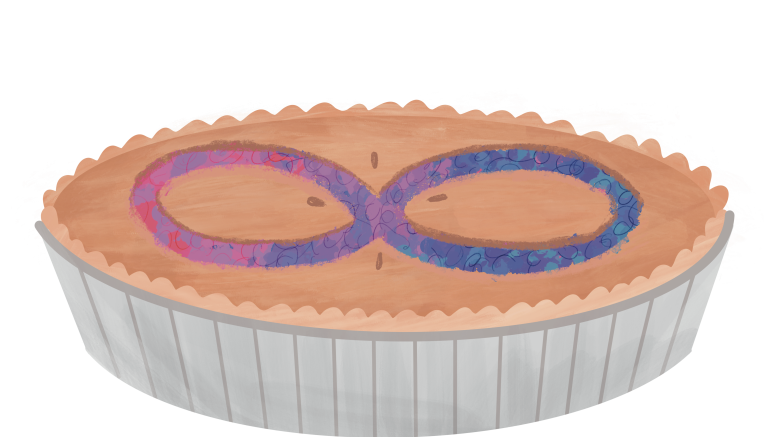I came out as bisexual when I was around 13. I understood myself as half-gay. A year before I came out, I became a citizen of the Manitoba Métis Federation. I understood being Métis as being half-Indigenous. While I am still bisexual and, obviously, still Métis, I was incorrect about what either of these identities were.
The term “half-gay” is important to unpack, as it has a lot to do with my conception of what bisexuality meant at the time. When I came to terms with my sexuality, I understood it as meaning attraction to both men and women. The logic I had in my head was that a man liking women is heterosexual, and a man liking men is homosexual. Therefore, bisexuality is half-homosexuality and half-heterosexuality.
There are a few problems with this definition, but as a 13-year-old it made a lot of sense. First, I am not exclusively attracted to men and women. Second, being bisexual does not halve my attraction to women, nor is my attraction to men half of what a homosexual person would experience. Being bisexual is a unique sexuality itself.
A more accurate description of my sexuality is that I am open to attraction towards any gender. Of course, this realization came about after years of experience along with the small amount of wisdom that comes with my advanced age of 22.
Of course, how I understand my sexuality may very well differ from how someone understands their bisexuality. I am far from an authority on sexuality, but I do know that no matter how someone identifies they are more than just two parts of something else.
My Métis identity is not dissimilar in the way I came to terms with it. Because the Métis ethnocultural group has its origin as a mixed ethnic group, I interpreted to mean I am a mixed person. When someone asked me what I was, I told them I was half-white and half-Indigenous. While I do have mixed ancestry, my family is distinctly Métis in our culture and community connections.
To be Métis is to have a distinct unique ethnocultural identity. Métis music, dance, food, language, community and culture are inspired, yet distinct from their First Nations and European roots. Elements of Métis culture borrow from its mixed roots.
For example, the language spoken in many historically Métis communities, Michif, makes use of French nouns and Cree verbs. However, like other parts of Métis culture, the aspects of mixedness present in the Michif language come together to form a new whole rather than two halves.
An entire ethnocultural group cannot be reduced to simply being half of two races. The Métis people are a synthesis of centuries of culture and history. I am not half -white or half-Indigenous, I am wholly Métis.
Taking unique identities then conceptualizing them into being made up of two other things is an extreme oversimplification. On the surface it likely seems as though there is nothing inherently wrong with understanding these two identities as being constituted of two halves. However, when one takes the time to look more closely at these identities, there is much more than what is on the surface. The association with sexuality or ethnocultural identity as being half of something else is reductive.
For people who are queer, and/or racially or culturally mixed, sometimes identifying as two halves when speaking to others is helpful. It can be difficult to summarize oneself to those who do not have the understandings and experiences critical to making sense of their personhood. Identities, like people themselves, are not puzzle pieces that can be taken apart, they are unique complex concepts.
If our conception of Métis or bisexual identity is simply that to be either is to be made up of two halves, then that idea should be dispelled. Thinking about people as percentages or fractions isn’t just reductive, it impacts our ability to understand others.


